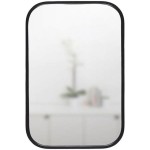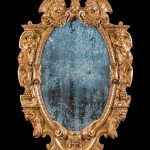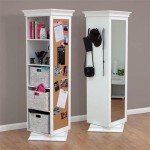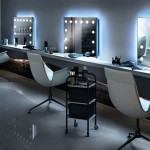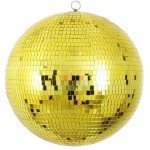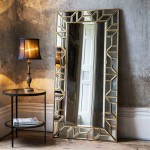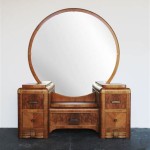Can I Use Gorilla Glue On A Mirror?
Gorilla Glue is a popular brand of adhesive known for its strength and versatility. However, its use on mirrors requires careful consideration. While certain Gorilla Glue formulations might initially seem suitable, several factors could lead to undesirable outcomes if not appropriately addressed.
One primary concern is the potential for the adhesive to damage the mirror's reflective backing. Many mirrors utilize a thin layer of silvering or other reflective materials that can be susceptible to chemical reactions with certain adhesives. The strong solvents present in some Gorilla Glue formulas could potentially corrode or dissolve this backing, leading to blemishes, discoloration, or complete loss of reflectivity.
Another critical factor is the expansion property of some Gorilla Glue variants. Certain formulations expand during the curing process, which can generate significant pressure. This expansion can stress the mirror, leading to cracks or even shattering, particularly with thinner or more delicate mirrors. Even if the mirror doesn't break, the pressure exerted by the expanding glue can distort the reflective surface, creating a funhouse-mirror effect.
Furthermore, the clarity of certain Gorilla Glue formulas can be an issue. While some versions dry clear, others may retain a yellowish tint, which can be unsightly, especially against the reflective surface of a mirror. This discoloration can be particularly noticeable with beveled mirrors or those with decorative edges where the adhesive might be visible.
The application process itself presents further challenges. Gorilla Glue’s thick consistency can make it difficult to achieve a thin, even application, essential for preventing excess adhesive from squeezing out and marring the mirror's surface. The quick setting time of some formulas also leaves little room for adjustments, increasing the risk of misalignment or uneven bonding.
If Gorilla Glue is considered for mirror adhesion, it's crucial to select the appropriate formulation. Gorilla Glue offers various products with different properties. Some specialized formulas, such as Gorilla Glue Clear Grip Contact Adhesive, are designed for clear application and bonding non-porous surfaces, potentially making them more suitable for mirror applications than the original Gorilla Glue formula. Consulting the manufacturer's specific product recommendations for mirror adhesion is essential.
Alternatives to Gorilla Glue offer potentially safer and more effective solutions for mirror mounting. Specialized mirror adhesives are formulated to adhere to glass and reflective backings without causing damage. These adhesives often provide a stronger, more reliable bond while minimizing the risk of discoloration or distortion. Additionally, they typically offer greater clarity and are designed for easy application.
Silicone sealants are another viable option for certain mirror applications, particularly for sealing edges or securing the mirror to a frame. Silicone offers excellent adhesion to glass and other non-porous materials. Furthermore, many silicone sealants are formulated to resist moisture and mildew, making them suitable for bathroom environments.
Double-sided mounting tape specifically designed for mirrors can be a suitable choice for lighter mirrors and non-critical applications. This tape offers a convenient and relatively clean method of adhesion, although its holding strength may be less than that of liquid adhesives.
Mechanical fastening methods should also be considered, especially for heavier mirrors or those in high-stress environments. Clips, brackets, and other hardware can provide a secure and reliable mounting solution without the risks associated with adhesives. While these methods may require more installation effort, they offer greater stability and can be easily adjusted or removed.
Prior to applying any adhesive to a mirror, it's advisable to conduct a test on an inconspicuous area. This test allows for evaluating the adhesive's compatibility with the mirror's reflective backing and verifying its clarity after drying. This precautionary step can prevent potentially irreversible damage to the mirror.
Proper surface preparation is crucial for successful mirror adhesion. Both the mirror and the mounting surface should be thoroughly cleaned and dried before applying any adhesive. Any dust, grease, or other contaminants can compromise the bond strength and increase the risk of failure.
In conclusion, while certain Gorilla Glue formulations might be considered for mirror applications under specific circumstances, the potential risks associated with its use warrant careful consideration. Alternative solutions often offer safer, more reliable, and aesthetically superior results. Thorough research, product selection tailored to the specific application, and proper surface preparation are essential for achieving a successful and lasting bond.

Will Gorilla Glue Work On A Side Mirror Turborevs

Guide To Glue On Glass Gorilla

Diy Window Style Mirror Gorilla Glue

Diy Window Style Mirror Gorilla Glue

How To Fix My Rear View Mirror Fast And Easy

Effortless Gorilla Glue Removal From Mirrors Savior

Mirror Flower Pot Diy With Gorilla Glue Clear Plus 250 Home Depot Gift Card Giveaway

Gorilla Mirror Fix Adhesive Specialty Adhesives Soudal

Can You Use Gorilla Glue For Rear View Mirror Sphere

Effortless Gorilla Glue Removal From Mirrors Savior

